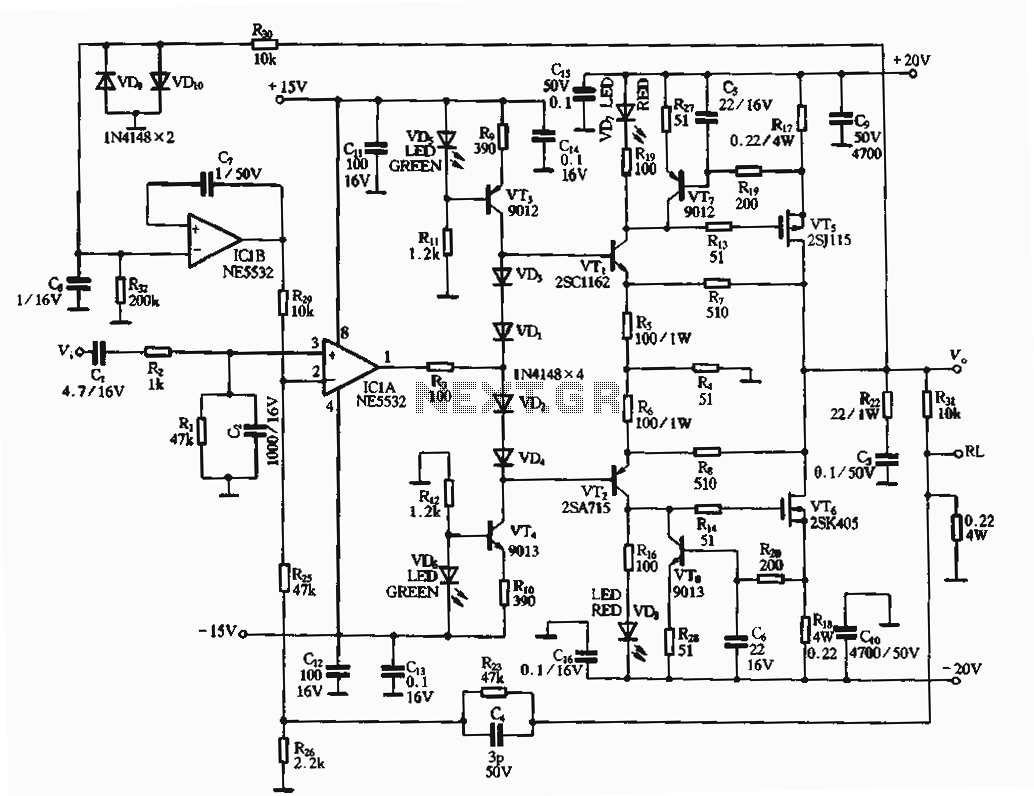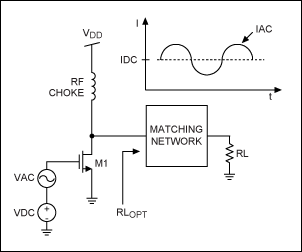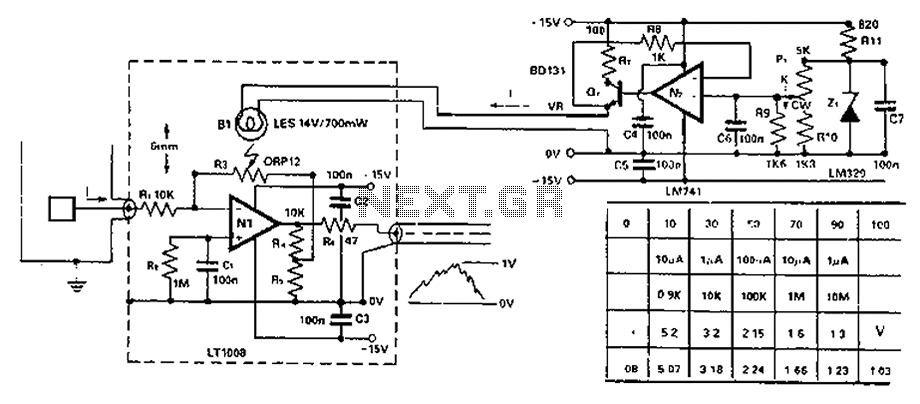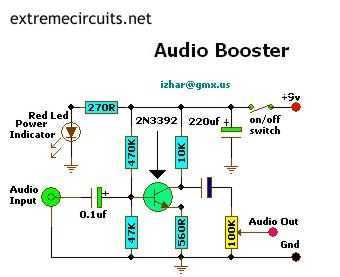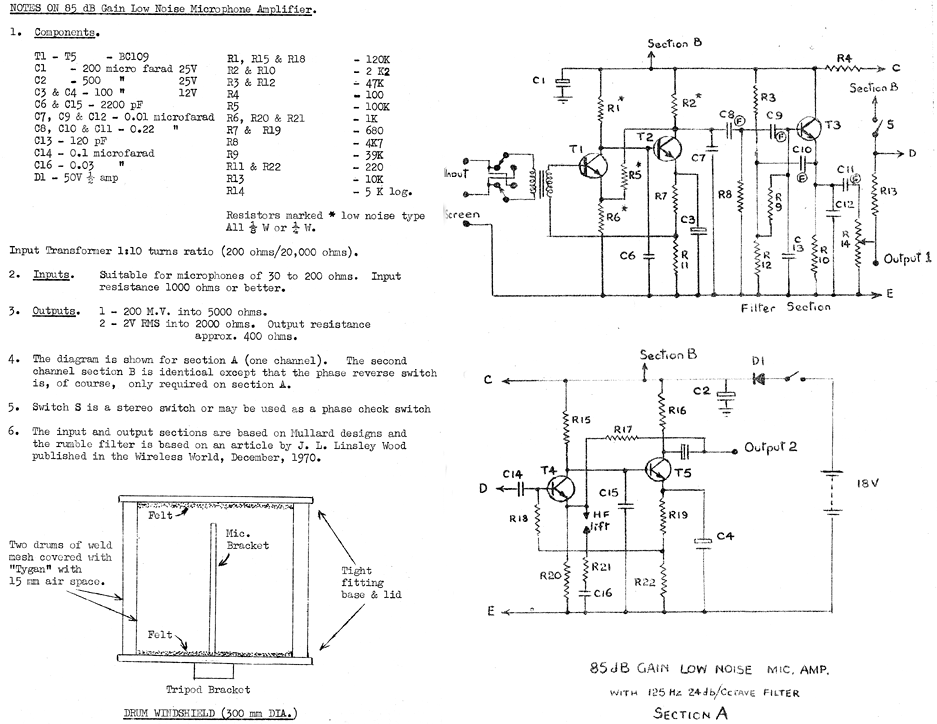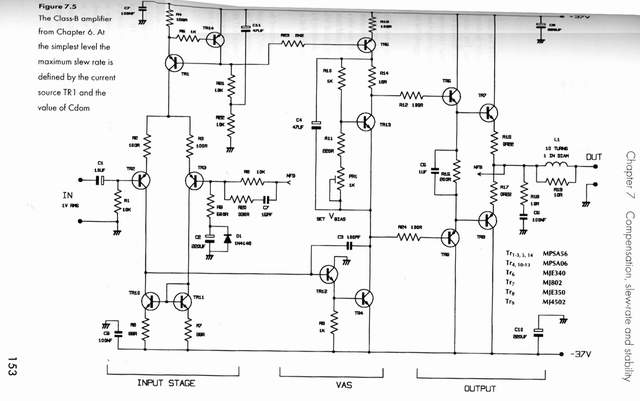
10 Watt Amplifier with TDA2003
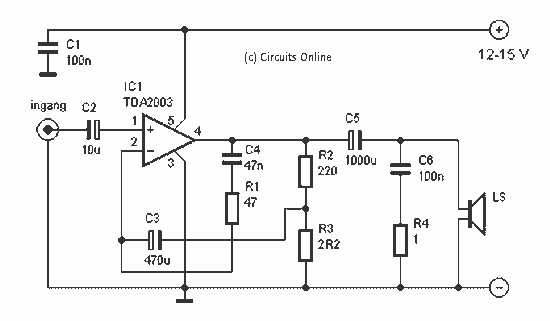
This simple amplifier can be used for many things. Together with Equalization and (small) speakers good for the computer instance. The circuit uses IC TDA 2003 amplifier. This IC is in a TO-220 housing, and has 5 pins. Decoupling capacitor C1 should be as close as possible to the terminals of the IC to sit. Feed the circuit with 12 to 15 V. The circuit uses about 1 A. More: Parts List R1 = 47 ? R2 = 220 ? R3 = 2.2 ? R4 = 1 ? C1, C6 = 100 nF C2 = 10 V ?F/16 C3 = 470 V ?F/16 C4 = 47 nF C5 = 1000 V ?F/16 IC1 = TDA 2003
The described amplifier circuit utilizes the TDA 2003 integrated circuit, which is specifically designed for audio amplification applications. This IC is packaged in a TO-220 housing, which facilitates effective heat dissipation, crucial for maintaining performance during operation. The circuit configuration is suitable for driving small speakers, making it ideal for computer audio systems or other compact audio applications.
Power supply requirements for the amplifier range from 12 to 15 volts, with a typical current draw of approximately 1 ampere. This operational voltage allows the amplifier to deliver sufficient output power while remaining within the safe operating limits of the TDA 2003 IC.
The components used in the circuit include various resistors and capacitors, each playing a vital role in the amplifier's functionality. The resistors are specified as follows: R1 is 47 ohms, R2 is 220 ohms, R3 is 2.2 ohms, and R4 is 1 ohm. These resistors are part of the feedback and gain setting network, influencing the overall gain and stability of the amplifier.
Capacitors C1 and C6, both rated at 100 nF, serve as decoupling capacitors, which are essential for filtering out noise from the power supply and ensuring stable operation of the IC. It is recommended that C1 be placed as close as possible to the IC terminals to maximize its effectiveness. Capacitor C2 is rated at 10 µF/16V, while C3 is a larger capacitor rated at 470 µF/16V, providing additional filtering and stability for the power supply. Capacitor C4, rated at 47 nF, and C5, rated at 1000 µF/16V, further enhance the frequency response and stability of the amplifier circuit.
Overall, this simple amplifier circuit is a versatile solution for enhancing audio output in various applications, particularly where space and power efficiency are critical. Proper layout and component placement are essential for optimal performance, especially concerning the decoupling capacitors and the power supply connections.This simple amplifier can be used for many things. Together with Equalization and (small) speakers good for the computer instance. The circuit uses IC TDA 2003 amplifier. This IC is in a TO-220 housing, and has 5 pins. Decoupling capacitor C1 should be as close as possible to the terminals of the IC to sit. Feed the circuit with 12 to 15 V. The circuit uses about 1 A. Parts List R1 = 47 ? R2 = 220 ? R3 = 2.2 ? R4 = 1 ? C1, C6 = 100 nF C2 = 10 V ?F/16 C3 = 470 V ?F/16 C4 = 47 nF C5 = 1000 V ?F/16 IC1 = TDA 2003 🔗 External reference
The described amplifier circuit utilizes the TDA 2003 integrated circuit, which is specifically designed for audio amplification applications. This IC is packaged in a TO-220 housing, which facilitates effective heat dissipation, crucial for maintaining performance during operation. The circuit configuration is suitable for driving small speakers, making it ideal for computer audio systems or other compact audio applications.
Power supply requirements for the amplifier range from 12 to 15 volts, with a typical current draw of approximately 1 ampere. This operational voltage allows the amplifier to deliver sufficient output power while remaining within the safe operating limits of the TDA 2003 IC.
The components used in the circuit include various resistors and capacitors, each playing a vital role in the amplifier's functionality. The resistors are specified as follows: R1 is 47 ohms, R2 is 220 ohms, R3 is 2.2 ohms, and R4 is 1 ohm. These resistors are part of the feedback and gain setting network, influencing the overall gain and stability of the amplifier.
Capacitors C1 and C6, both rated at 100 nF, serve as decoupling capacitors, which are essential for filtering out noise from the power supply and ensuring stable operation of the IC. It is recommended that C1 be placed as close as possible to the IC terminals to maximize its effectiveness. Capacitor C2 is rated at 10 µF/16V, while C3 is a larger capacitor rated at 470 µF/16V, providing additional filtering and stability for the power supply. Capacitor C4, rated at 47 nF, and C5, rated at 1000 µF/16V, further enhance the frequency response and stability of the amplifier circuit.
Overall, this simple amplifier circuit is a versatile solution for enhancing audio output in various applications, particularly where space and power efficiency are critical. Proper layout and component placement are essential for optimal performance, especially concerning the decoupling capacitors and the power supply connections.This simple amplifier can be used for many things. Together with Equalization and (small) speakers good for the computer instance. The circuit uses IC TDA 2003 amplifier. This IC is in a TO-220 housing, and has 5 pins. Decoupling capacitor C1 should be as close as possible to the terminals of the IC to sit. Feed the circuit with 12 to 15 V. The circuit uses about 1 A. Parts List R1 = 47 ? R2 = 220 ? R3 = 2.2 ? R4 = 1 ? C1, C6 = 100 nF C2 = 10 V ?F/16 C3 = 470 V ?F/16 C4 = 47 nF C5 = 1000 V ?F/16 IC1 = TDA 2003 🔗 External reference
Warning: include(partials/cookie-banner.php): Failed to open stream: Permission denied in /var/www/html/nextgr/view-circuit.php on line 713
Warning: include(): Failed opening 'partials/cookie-banner.php' for inclusion (include_path='.:/usr/share/php') in /var/www/html/nextgr/view-circuit.php on line 713
